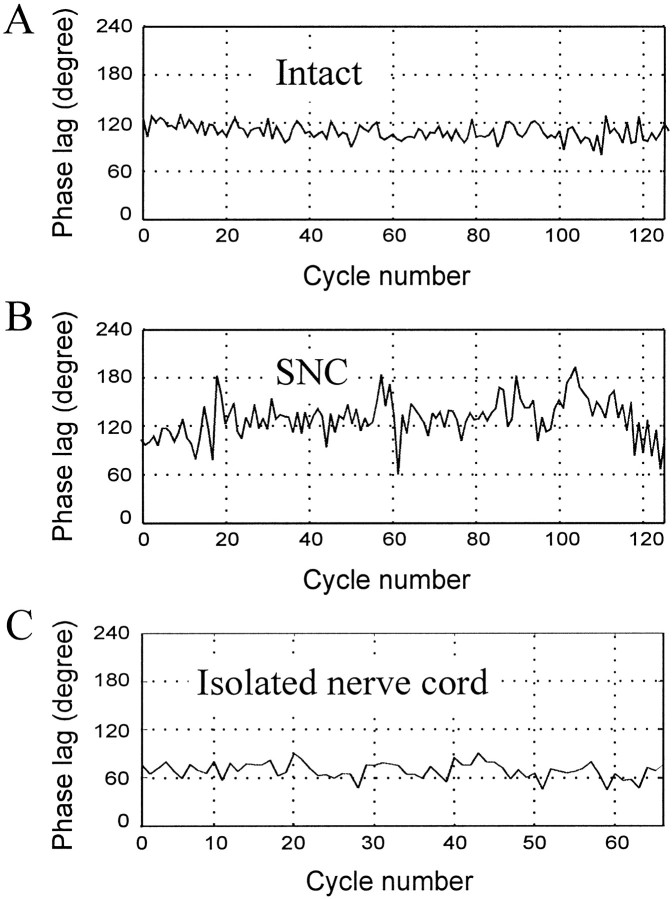Fig. 8.
Instantaneous phase lags in intact, SNC, and isolated nerve cord preparations. Instantaneous phase lags between M7 and M14, measured for each individual swim cycle, are plotted against cycle number. A, An intact preparation (Fig.7A, #3). Although there is some fluctuation, the phase lags are relatively stable within the range of 80–130° during the whole swim episode. B, An SNC preparation (Fig. 7A, #1). Large fluctuations can be seen all through the swim episode, with phase lags as low as 60° and as high as 180°. C, An isolated nerve cord preparation (Fig. 7A,#4). Variance in cycle period is approximately the same as that of the intact preparation shown in A. Phase lags were obtained from DP records in tethered animals. the number of swim cycles that fall into the corresponding phase bin. An asterisk indicates the mean value of the histogram. Numbers under each plot are the mean ± SD; the total number of swim cycles included in the plots is inparentheses. A, Data from individual preparations. Each preparation is represented by its best swim episode(s). For two preparations (#3, #4of intact and SNC), DP nerve activity was recorded in both intact and SNC conditions. For others, different animals were used for these two conditions. Isolated nerve cord data are from five additional leech preparations. B, Pooled data. Data from all preparations of the same category are pooled in one plot. Phase lags were obtained from DP records in tethered animals.

